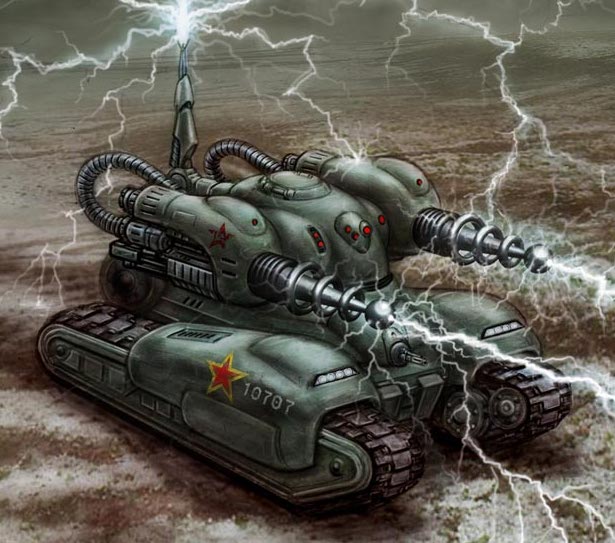Making the briefings
The games industry suffers tremendously from developers working themselves to death. Nevertheless, many of the best features arise from developers working on passion projects over their lunch hour or during the weekend.
Producer Ed Del Castillo remembers, "My favorite memory revolved around the things we did that as unasked for and unexpected that pushed the product above and beyond. For me, it was the mission briefings. We were going to do briefings that were just straight teletype, but the team was so enthused about the game that it didn't just seem like enough. So we hit on the idea to take the television graphics and put them on top of the briefing to create something people hadn't seen before."
Using Lightwave, Del Castillo and other developers worked to build an extremely "bootleggy demo." They produced maps and graphics that turned the screen into an interactive portal into the game's world. "We spent the whole weekend barely sleeping to put graphics on the briefing," Del Castillo remembers.
The result was FMV cutscenes that stood out dramatically when put up against competitors like WarCraft 2, which featured a simple text scroll. The story was related through these briefings. At one point, Seth tries to bring you in on a rebellion against Kane, only for a gun to come in from out of the frame and fire at point blank range—a moment that serves to drive home how dangerous Kane could be. All of this was extremely cool at the time, and it added to the experience in a way that simple teletype briefings never could.
General Sheppard was a Blues Brothers impersonator in Las Vegas
Joe Kucan was tasked with finding performers for Command and Conquer. Kucan had a theatrical background, meaning that he had access to plenty of actors. But many of them were "community theater people," meaning they weren't professional actors.
"I talked to the talent agencies in town," Kucan remembers. "We were getting access to performers from the [Las Vegas Strip] who were looking to expand what they did."

Command and Conquer made clever use of FMV, e.g. by having the player "flip" through TV channels at the start of the game. |
MobyGames
General Sheppard, who leads the GDI faction, was one such actor. According to Kucan, he got his start as a Blues Brother impersonator on the Strip.
Kucan also found himself pulling in numerous people from the studio itself. Kucan himself became Kane. Montgomery, who as a receptionist was responsible for most of the studio's automated voice messages, became EVA.
Eric Gooch remembers being recruited to play Seth. "[Joe Kucan] looked at me and said, 'Oh crap, we forgot to cast Seth. You can be Seth. You want to be Seth?' And that's how Seth was created."
And sometimes that's how a new character is born.
Command and Conquer didn't even have proper green screens
Command and Conquer had pretty strong production values for the early 90s, but its setup was hilariously low-tech by today's standards. Gooch remembers, "It was so seat of the pants it was hilarious. We had rented this big empty warehouse. We didn't even have chroma key paint. I went to the hardware store and bought some green paint, and that was our first green screen."
Kucan remembers, "Everything was shot on stage with a dead-on camera. We were sort of bouncing on a suspended floor. It feels very primitive in hindsight. I didn't think it felt like that at the time. It felt very brave and new and avant garde."

His name is Kane, but he looks more a Steve Austin. |
MobyGames
Command and Conquer mostly hid its low-budget production behind clever editing and graphical tricks. The first cutscene is incredibly clever: an unseen TV watcher rapidly clicks through channels, which serve to establish the world. Jazzercise channels are interspersed with news updates and explanations of Tiberian, the Nod sometimes appearing the background. It was an approach that served to define Command and Conquer's look and feel years after FMV fell out of style.
Command and Conquer of course went on to become a huge success, and Westwood subsequently had a much larger budgets. But in some ways, higher production values only served to further drive home the inherent cheesiness of Command and Conquer's approach. The original game was endlessly clever in the way that it told its story, and that's why it holds up so well today.
Sadly, it's been a long time since we've had a new Command and Conquer game. But there are signs that EA is coming around on the series. A
Command and Conquer Remaster is currently underway, and will reportedly have input from fans. It's been almost 25 years since the first game, but hopefully it retain that distinctive spirit of DIY that made the original so memorable.







![The Year of Incline [2014] Codex 2014](/forums/smiles/campaign_tags/campaign_incline2014.png)




![Have Many Potato [2013] Codex 2013](/forums/smiles/campaign_tags/campaign_potato2013.png)




















